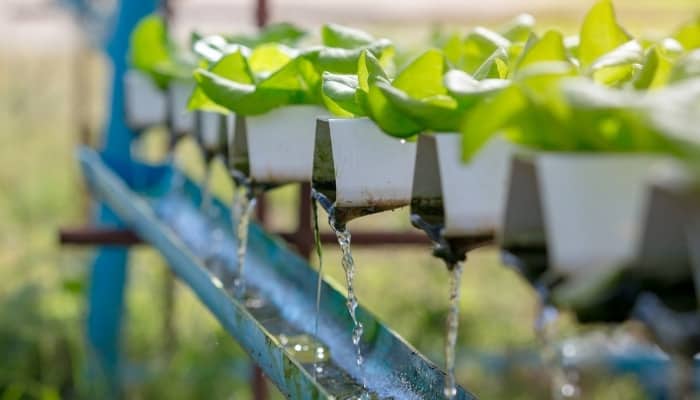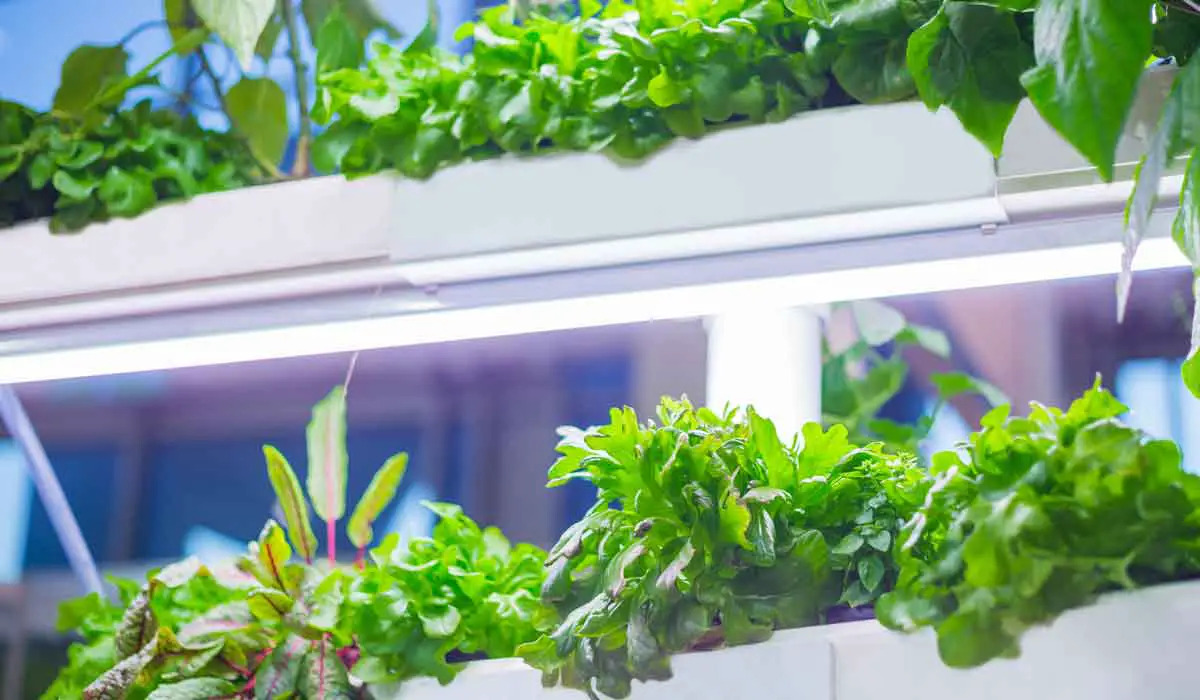Hydroponic Systems: How To Clean and Reuse Water
Hydroponic systems are a popular and efficient way to grow plants without soil. The cornerstone of these systems is water, which carries the nutrients needed for plant growth. However, maintaining a clean and nutrient-rich water supply is crucial for successful hydroponic gardening.
Cleaning and reusing water in hydroponics can help growers to save money and reduce their environmental impact. But, it's essential to purify the water to optimize plant growth while minimizing risks of infection or contamination.
To clean hydroponic water, you first need to disinfect it. You can use different methods such as ozonization or UV irradiation for water treatment. This helps to remove harmful bacteria, viruses, and fungi that can cause diseases in plants. Once the water is disinfected, it is safe to reuse.
An efficient way to recycle hydroponic water is by analyzing its mineral levels regularly. This ensures that the nutrient levels are optimal for plant growth while preventing the accumulation of excess minerals that can be harmful to plants.
Hydroponic water filtration is a necessary practice that helps remove impurities from the water. Proper hydroponic water management means adopting a range of techniques, such as monitoring the static solution culture, cleaning hydroponic reservoirs, and saving water in hydroponic systems.
Process for Purifying and Recycling Water in Hydroponic System
In hydroponic gardening, the efficient use of water is not only an economical choice but also an environmentally responsible one. Knowing how to clean and reuse water in a hydroponic system is fundamental for sustaining a healthy and productive garden.
The Pasteurizing Process
Hydroponic systems use nutrient-rich water to support the growth of plants. To save water and reduce costs, many growers opt to reuse hydroponic water. However, reusing water without proper treatment can result in nutrient depletion and the risk of infection. A popular method for cleaning and treating hydroponic water is the pasteurizing process.
The pasteurizing process involves heating the water to a high temperature for at least 30 seconds to sterilize it. The process kills bacteria and other harmful microorganisms that could damage the plants or affect their growth. To carry out the process, growers will need a heat exchanger, which transfers heat from a source to the water.
Before pasteurizing the water, growers preheat it to help reduce the risk of thermal shock. This involves slowly heating the water to the desired pasteurization temperature. Once the water reaches the target temperature, it is exposed to heat for a set period. After the process is completed, the water can be reused for plant growth.
While the pasteurizing process is effective at cleaning hydroponic water, there are potential drawbacks. The process can cause mineral build-up within the heat exchanger, leading to machine damage and the need for regular maintenance. Additionally, the expense of the process may be another consideration for growers.
The Ozone Sterilizing Process
The process of sterilizing hydroponic water plays an essential role in maintaining the nutrient levels required for healthy plant growth. One method often used in hydroponic systems is ozone sterilization, which efficiently eliminates microorganisms and other contaminants that can harm plant roots.
Ozone gas is a form of oxygen molecule with three oxygen atoms. It occurs naturally in the ozone layer, which shields the Earth from harmful ultraviolet radiation. High concentrations of natural gas from the ozone layer create ultraviolet radiation, which can be artificially generated to sterilize and recycle hydroponic water.
The two primary types of ozone generators used in hydroponics are ultraviolet (UV) lamps and corona discharge (CD) generators. UV generators utilize UV light to create ozone, while CD generators use high voltage electricity to create ozone. UV generators are easy to use and maintain, but they are less efficient than CD generators, which require more technical knowledge to operate.
The UV Disinfecting Process
Hydroponic systems provide an efficiently controlled and nutrient-rich environment for the growth of plants. When considering hydroponic water management, it is important to maintain clean and nutrient-rich water by utilizing methods such as the UV disinfecting process.
The UV disinfection process involves exposing hydroponic water to UV-C radiation to eliminate harmful pathogens and bacteria that may be present in the water. UV-C radiation is able to penetrate bacteria and virus cell walls, destroying their genetic material, and ultimately preventing them from multiplying. A total UV dose is required for complete disinfection, and the appropriate radiation chamber and disinfection unit should be selected based on the volume of water being treated.
The UV disinfecting process has a range of benefits compared to other methods such as ozonation and pasteurization. UV disinfection is a chemical-free method of water treatment and does not add any by-products to the water. Additionally, it does not alter the nutrient levels within the hydroponic water, making it more efficient for the recycling and reuse of nutrient solutions.
The Water Purifying Process
The water purifying process involves a series of steps aimed at removing contaminants and restoring the nutrient levels needed for plant growth. Water treatment can be done through DIY methods or by using professional equipment such as hydroponic water filtration systems. Filtration systems remove impurities and heavy metals from the water, while UV lights kill microorganisms, and ozone gas is used to purify the water.
Recycling hydroponic water has numerous benefits, such as cost savings, environmental protection, and efficient use of resources. The nutrient-rich water can be reused to maintain the right nutrient concentrations in the hydroponic reservoir. However, it's crucial to note the potential risks involved in reusing contaminated water, which may affect plant growth and pose a health risk.
Benefits of Purifying and Recycling Water in Hydroponic Systems

Hydroponic systems offer many benefits over traditional agriculture, including water conservation, the ability to grow plants in a range of locations and climates, and higher yields. However, managing water in hydroponics is a critical aspect that requires careful consideration. One strategy is to clean and reuse hydroponic water, which offers a range of benefits.
Increasing Plant Growth and Productivity
Hydroponic systems can provide an efficient way of hydroponic growing plants without the use of traditional soil-based agriculture. By using water, nutrients, and oxygen levels, plants can thrive in hydroponic systems and produce a higher yield in a shorter amount of time. However, to achieve optimal plant growth and productivity, water quality is key.
Reusing water in hydroponic systems can be cost-effective and eco-friendly. It not only conserves water but also maintains optimal nutrient levels, as minerals and levels of nutrients do not dissipate quickly in hydroponic systems. However, the risk of contamination must be kept in mind.
Reducing Cost and Wastage
Hydroponic systems offer a sustainable and efficient alternative to traditional agriculture, but it's still important to reduce costs and wastage for maximum benefits. One effective way of reducing costs is by reusing nutrient-rich water. Instead of disposing of water after a single use, hydroponic growers can install systems that filter and recycle water for reuse in future nutrient solutions.
To achieve this, growers need to carefully manage nutrient content and water consumption in their hydroponic systems. This minimizes the risk of plant damage and helps to maintain optimal growth conditions. UV disinfection is a cost-effective recycling method that can help to eliminate microorganisms and pathogens in recycled water. It’s also recommended to use run-to-waste systems for large-scale operations to reduce water consumption.
Improving Nutrient Levels for Plants
For pasteurization, soil heat mats or a pot of boiling water are required to heat the water to a temperature of 158°F for 30 minutes. Ozone sterilization involves the use of a corona discharge ozone generator and an air pump to circulate the ozone gas through the water. On the other hand, UV disinfection requires a UV lamp, a quartz sleeve, and a light controller to calculate the UV dose.
Apart from water sterilization, recycling hydroponic water can also improve nutrient levels for plant growth and conserve water. This process involves filtering the nutrient solution through activated carbon and a sand filter to remove debris and heavy metals, with the recycled water being added back to the hydroponic system.
Enhancing Quality of Aromatic Plants
To enhance the growth of aromatic plants in a hydroponic system, it is crucial to maintain optimal nutrient levels in the nutrient solution. The essential macronutrients required by plants include nitrogen, phosphorus, and potassium, while the micronutrients required include calcium, magnesium, iron, zinc, among others. The acceptable concentration ranges for each nutrient ion require careful monitoring to avoid under or overfeeding.
Empirically determining the optimum nutrient concentrations for different plant varieties is necessary for achieving optimal plant growth. The nutrient levels can be assessed using various techniques, including monitoring plant growth, analyzing the nutrient solution, and measuring nutrient uptake.
Drawbacks of Purifying and Recycling Water in Hydroponic Systems
Hydroponic systems have revolutionized the way we grow plants, offering a sustainable, efficient, and space-saving alternative to traditional agriculture. One of the biggest advantages of hydroponics is the ability to reuse and recycle water, which can result in significant water savings and nutrient conservation. However, there are also some potential drawbacks to clean and reuse water in hydroponic systems that growers need to be aware of.
Possible Toxicity from Heavy Metals & Nutrients
Hydroponic systems are highly efficient as they enable precise control over nutrient concentrations to support plant growth. However, this precise control can also lead to toxicity risks associated with heavy metals and nutrients. Heavy metals like lead, copper, and zinc, often used in nutrient solutions, can contaminate the water and pose serious health risks to plants, humans, and animals. Nutrient concentrations that exceed the plant's capacity to absorb can also cause toxicity problems.
Difficulty to Control Nutrient Levels in Water Source
One common challenge in hydroponics is the difficulty of controlling nutrient levels in the water source. Tap water and other water sources often contain heavy metals and nutrients that may cause toxicity in plants. These contaminants can come from a variety of sources, including fertilizers, pesticides, and other chemicals used in traditional agriculture.
Symptoms of heavy metal toxicity in plants include stunted growth, yellowing leaves, and reduced nutrient uptake. To prevent these symptoms, it is crucial to regularly test and manage the nutrient levels in your hydroponic system. This can be done through the use of water filtration systems, nutrient recycling, and proper water management.
Why Is Important To Have Clean Hydroponic Water
Clean water is vital for the growth and productivity of plants in hydroponic systems. Unlike traditional agriculture, where soil naturally filters and cleans water, hydroponic systems rely on the grower to properly manage and maintain the water. Nutrient-rich water can become a breeding ground for harmful bacteria and heavy metals that can stunt plant growth or even lead to infection. Therefore, it is essential to regularly clean hydroponic water and maintain proper nutrient levels to mitigate the risk of contamination.










